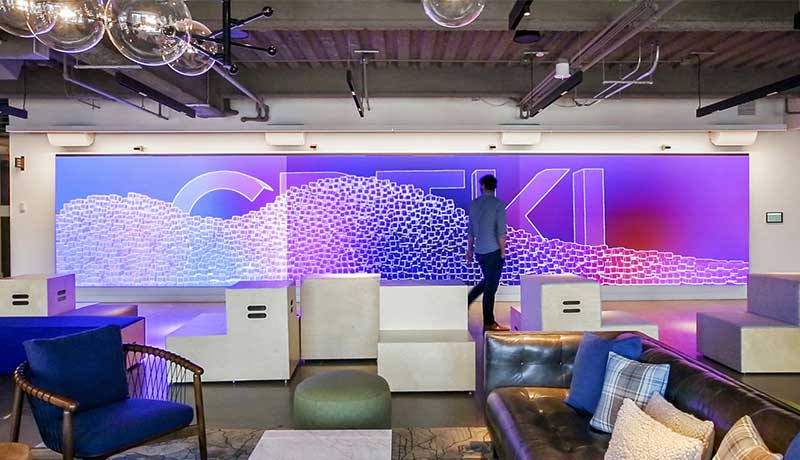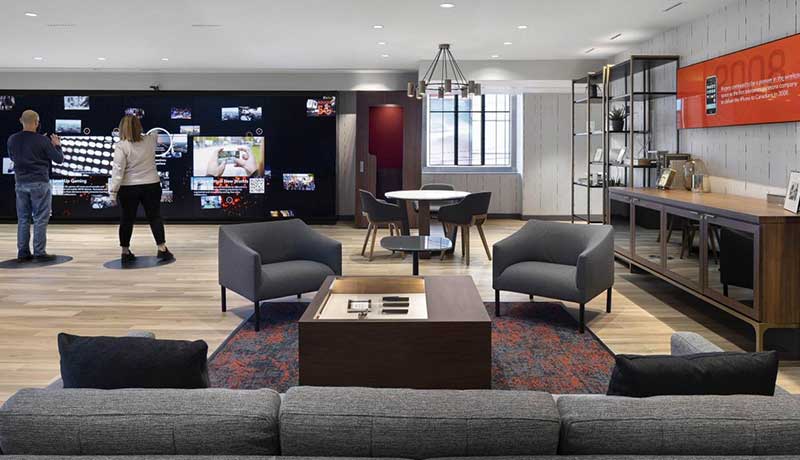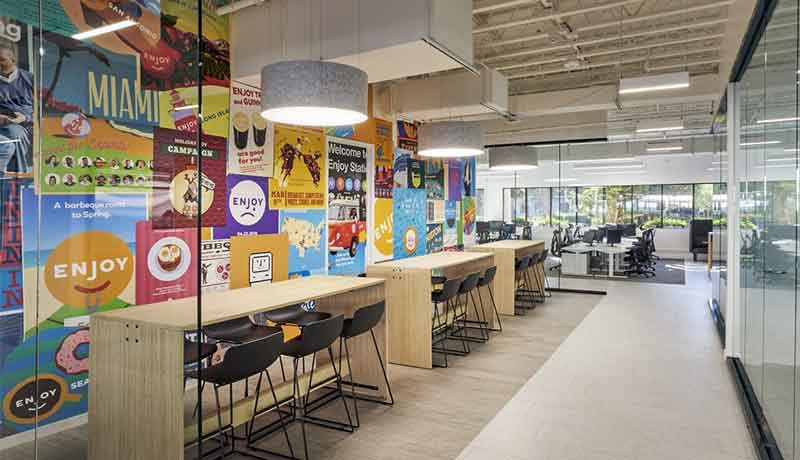
Industry experts from CallisonRTKL (CRTKL), a global consultancy specialised in architecture, design, and technology, has unveiled key trends which will advance the built environment in 2021. Taking into account new industry regulations and social distancing guidelines, a large emphasis of the year will be focused on re-envisioning spaces leveraging experienced master planning to effectively manage spaces better.
Meeting smart city and sustainability goals continues to be key as building operators in the Middle East continue to work towards meeting the objectives set by the region’s visionary leadership as well as creating happier and liveable urban communities. Innovation and technology adoption are key factors in helping to drive this.
Matthew Tribe, Executive Director at CRTKL and Global Leader for both the firm’s Planning & Urban Design Studio and its Resiliency initiative, said: “This year has been like no other. But in any crisis, opportunities are uncovered. Businesses across the region have demonstrated agility, nimbleness, and most importantly, a resilience which has helped support the region in becoming one of the most rapid to bounce back for the repercussions of the COVID-19 pandemic. The pandemic’s impact on the Middle East – on where we work, on how we travel, and on the way we live – will be felt across the course of this decade. Over the course of the next year, we expect to see those changes impact how we design the build environment around us.”

In 2021, CallisonRTKL expects for the GCC residential market to move away from the apartment to the villa, as more and more individuals are looking to have more space when working from home.
Obada Adra, Associate Director at CRTKL, commented: “With working from home a central aspect of post pandemic life, residential requirements have shifted dramatically during 2020. No longer are residents in the GCC looking for apartments in central locations with a short commuting time to offices. Rather, real estate trends are indicating that consumers are happy to live in the suburbs in exchange for more living space for a home office and other amenities. Such a transition in consumer appetite will be transformational in the design and development of future real estate offerings in cities in the GCC.”
Mixed Use developments will continue to act as drivers of community and economic vitality in 2021. Their use will continue to be popular among communities looking to re-engage and re-connect, following the conclusion of the pandemic.
Geoff Ford, Associate Director at CRTKL, commented: “As the world is adapting to new ways of living and working, with the lines between all sectors blurring, creating a localised ecosystem that sustains itself and operates more like a circular economy has increasingly become the aim. Be it shopping and entertainment districts, healthcare institutions, airports, sports complexes or hospitality infrastructure, there will be new methods of valuation across all property types as single-use buildings merge in to more mixed-use, digital and adaptive environments. Over the years, these transformations have already began taking shape but will inevitably evolve further in 2021. As such, the historical nature of ‘zoning’ will be eliminated and the main goal will be clear – one asset, utilised flexibly, catering for a range of users.”
With US$ 5.5 trillion potentially being wiped off the global hospitality sector, wellness will become an integral aspect of the global hospitality sector. Hospitality design will reflect that through becoming more flexible and community orientated. As global audiences around the world look forward to travelling post pandemic, hospitality is due to be shaken-up in 2021.
Prodipto Ghosh, Senior Associate Director at CRTKL commented: “Over the years, the regional hospitality sector has become renowned for its open, decentralised and urban layout. However, post-COVID, the hospitality sector turned to a more protected, controlled, and wellness-focused model, leaving much of the assets underutilised. But as one door closes, another one opens. With the declining construction costs, many operators are now able to spend on planning and tending to new projects or better yet – repurpose existing infrastructure to meet currents demands. In 2021, expect to see co-working spaces being integrated into the hotel common areas and monetise these spaces on a mutually beneficial basis as the flexible and hybrid working revolution booms. Aside from repurposing interior, wellness will of course also continue to be prioritised over all else.”
The pandemic has altered our attitude toward healthcare. Individual and collective health has now come to be recognised in the context of an economy’s health. As the fourth industrial revolution ushers in new technology with significant applications for healthcare, healthcare will be a durable sector for investment, with telemedicine and behavioural health being central areas of focus for future development.
Jim Henry, Senior Vice President and leader of the CRTKL healthcare sector, commented: “The pandemic has undoubtedly brought healthcare to the forefront and to the top of both local and global agendas. So much so that health of the individual and the collective community became recognised in the context of an economy’s health. This year, the digital transformation of the sector will take centre stage as links between science, data, technology, and health draw closer, with each fuelling the other’s advancement. With telemedicine, mental health, and generational care becoming increasingly prevalent, the focus of designers will be shifted accordingly.”
Workplace design will radically change following the levels of technological integration which have been catalysed by the pandemic. The integration of data, of personal devices into the workplace, and of continued focuses on wellness will foster new opportunities for the future workplace.
“There needs to be a reason to come to work,” says Jeanne Wood, CRTKL Senior Associate Director. “Having the support – whether it’s technical or operational that helps ease the task or type of work they are doing that day is important to create that hub. Also, creating a place with more collaborative, specialized uses for sharing, socializing, and learning from others fosters a stronger workplace culture.”
While cultural institutions at a regional and global level have struggled during the COVID-19 pandemic, the re-opening of borders following the pandemic offer new avenues of growth for artistic spaces in 2021. During this time, museums, art galleries, and performance spaces can reimagine the design of cultural space in line with shifting visitor expectations and behaviour.
Harvey Miller, Associate Director at CRTKL commented: “As people and institutions have become more appreciative and observant of their immediate surroundings, there has been a collective understanding across both mature and emerging economies that cultural infrastructure pays a significant role in ensuring citizen well-being and steering the growth of economies. In recent months, we have also seen culture shift from self-reference to a collective consciousness, unifying public, private and social enterprise with a common purpose. We have increasingly seen communities that are immersed in a public realm and draw its influence from the surrounding cultural infrastructure surface across the region. In 2021, we predict that urban design techniques will weave cultural infrastructure and daily commodities together to create a community that is oriented around people, yielding economic and social benefits.”

Sustainability will continue to be a core concern in development and design in 2021. With the growth of net-zero development as a core aspect of building design, construction will have to further incorporate new sustainable practices into its ongoing operations.
“Understanding climate responses and proposing strategies that connect buildings with the environment will continue to be a priority in 2021,” says Gosia Baron, CRTKL Senior Associate Director. “Going forward, each development and developer will be unique in their offer and their environmental approach, recognising a customer who is conscious of their impact on the planet, will be just as conscious of the sustainable credentials of their home.”
